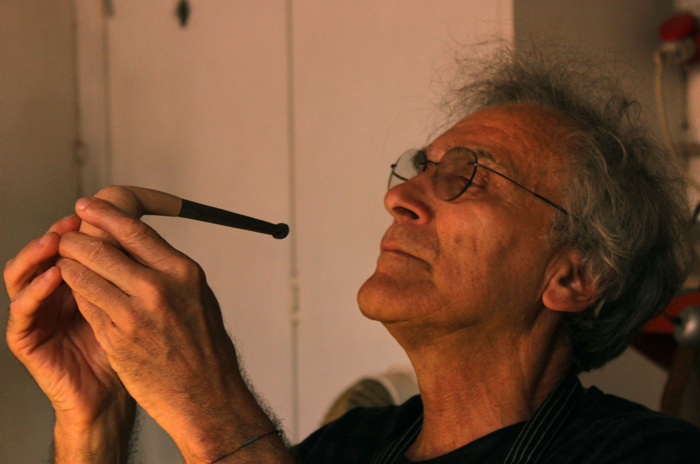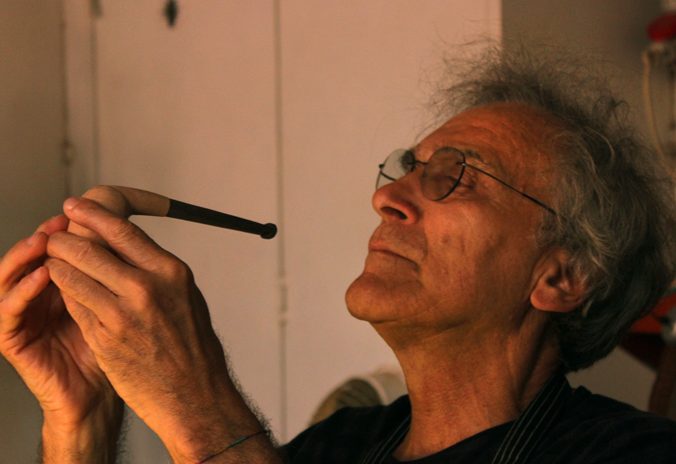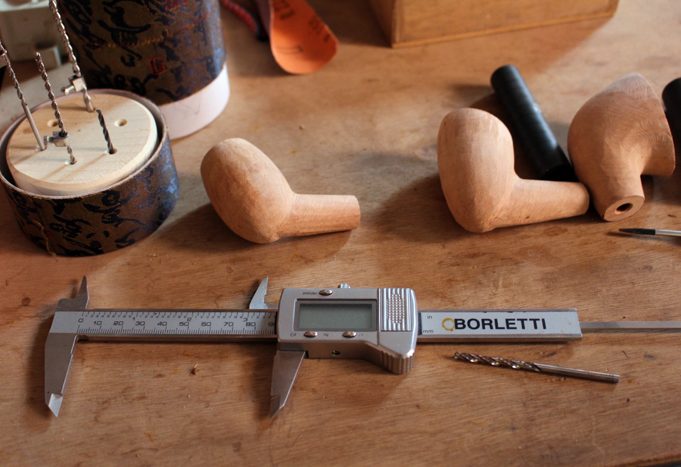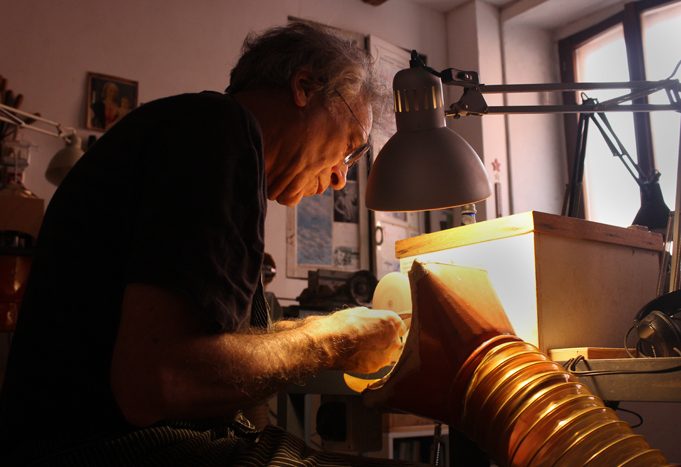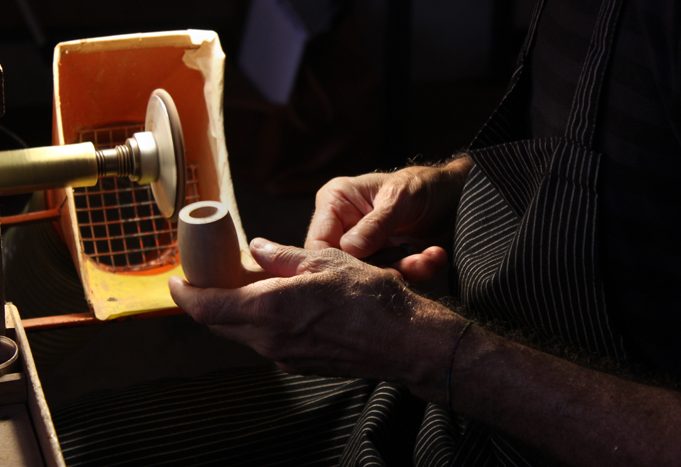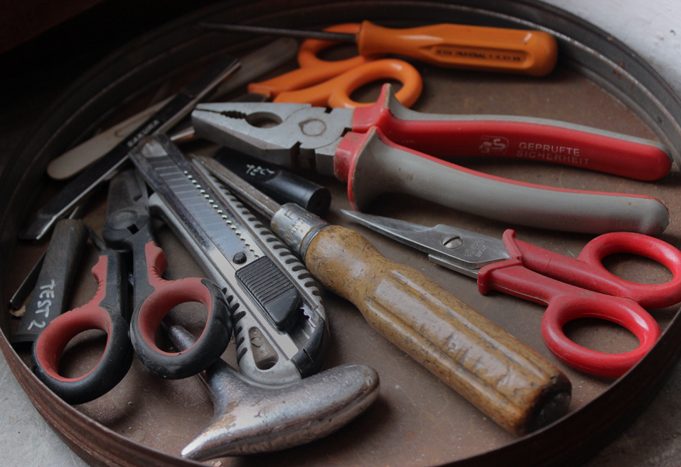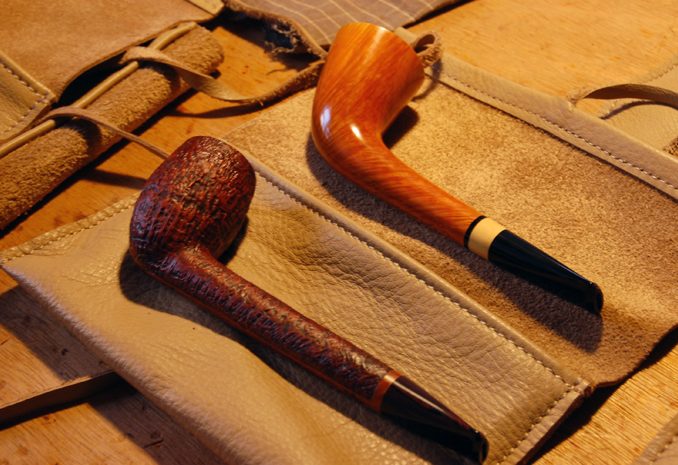The wood creations that have become more than just a business.
PESARO, Italy — In the hustle and bustle of this tourist-filled beach town lies two wooden doors framed by marble. A copper plaque with the words “Le Nuvole,” or clouds, hangs next to them. Walking through the busy alleyways, passersby might think this is just another entrance to a house.
As you step through the doors, however, you enter a dimly-lit workshop with the scent of wood shavings. The room is filled with powerful metal machinery and several dusty desk lamps clamped to the workspace. This is the workshop where tobacco pipes are meticulously handmade.

Maurizio Tombari is dressed in a black-and-white striped apron covered in paint stains. Silver framed glasses rest prominently on Tombari’s head. With sandpaper in hand, he sits at the large workbench in the middle of the room ready to create his Le Nuvole pipes.
“Originally the inspiration from clouds was not based on their lightness, but their uniqueness to keep moving and changing,” said Tombari, explaining the name behind his line of pipes and workshop.
Tombari stumbled upon his craft by chance. After graduating from college, he landed a job at a tobacco pipe factory, where he learned the ins and outs of the business. Tombari recalled that the pipes made in the factory lacked originality.
So, in 1996, he opened Le Nuvole, with the idea to create his own pipes.
“The process isn’t simple,” said Tombari. “There are about 150 steps start to finish.”
It takes nearly six hours for him to create the perfect pipe. The first step is selecting the wood. His pipes are crafted out of briar wood, which Tombari said produces the finest pipes in the world because of its ability to withstand extreme temperatures.
It’s very important to remember that I am a craftsman not a businessman.
In order for the pipes to have the most exquisite taste, Tombari puts his wood through an extensive seasoning process. The seasoning is crucial, said Tombari, because it makes all the difference in the authentication of the actual pipes.
“Wood pieces are boiled for 18 to 24 hours, which helps get the bitter taste out of them,” explained Tombari. “After, the wood is laid out to dry.”
Gregory Pease, a customer and friend of Tombari since 1998, said the taste of Tombari’s pipes set them apart from the competition.
“Maurizio feels, and I am inclined to agree, that how and where the briar is seasoned is more important than where it grew up,” said Pease.
With the help of his wife Stefania, who designs all of the pipes, Tombari handmakes about 150 pipes a year. He inspects the grain of the wood carefully to decide which pipe shape best suits each particular cut of briar wood.
Tombari, with a pencil in hand, precisely draws the sketches on the wood block. Wearing safety goggles and an apron, he steps up to the machinery. The loud clanking sound of the blade hitting the wood fills the room.
Tombari has an intense look of concentration in his eyes as he drills the pipe’s holes into place. He diligently sands the pipe down, using a variety of sandpaper. After the staining process is complete and finishing coat is applied, the pipe is ready to sell.

Ninety percent of Tombari’s customers are from the United States. Over the years, Tombari has showcased many of his creations internationally. And the Internet has opened up a world of new business. He now has a website where he keeps loyal customers updated on new designs and products.
Terry Davey, of Watertown, New York, has admired Tombari’s pipes for years. Davey bought his first pipe from Tombari’s website in 2004. Yet he has neither been to Italy nor visited Tombari’s workshop.
“His pipes are as good as those of the best-known carvers,” said Davey. “They are wonderful, light, and are delightful to smoke.”
While the online presence is vital for Tombari’s business, he said there are limitations. Collectors are not able to physically touch the wood, inspect every grain or experience the lightness and quality of the pipe. Tombari also sell his pipes in retail stores, allowing customers to view his craftsmanship before making a purchase.
Tombari doesn’t get too caught up in the business side of things. He takes his passion for the art of pipemaking very seriously. After all, his inspiration to start Le Nuvole was the desire to create his own unique handmade pipes.
“It’s very important to remember that I am a craftsman not a businessman.”



























